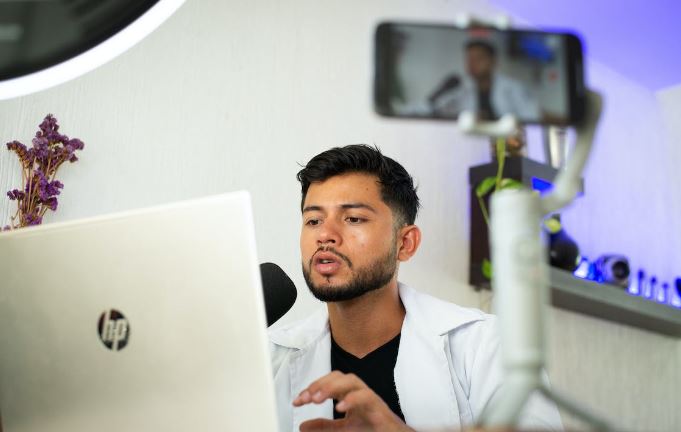7 Recent Advanced Medical Technologies
Healthcare is experiencing an unprecedented revolution driven by technological innovation. Advanced science combined with cutting-edge engineering has produced medical technologies that are revolutionizing patient care and changing its landscape forever.
In this blog post, we explore the forefront of innovation, where artificial intelligence investigates diagnostic challenges, telemedicine connects patients to healthcare providers across distances seamlessly, and CRISPR gene editing gives us access to alter our genetic code.
From 3D printing’s precision to the dexterity of robot-assisted surgeries, each technology unravels a new chapter in the narrative of healthcare evolution. Join us on this journey through the corridors of progress as we unravel the threads of seven transformative medical technologies, propelling us toward a future of personalized, efficient, and accessible healthcare.
Contents
Cutting-Edge Devices
Cutting-edge devices, like single cell sorters, redefine precision in healthcare, enabling the isolation and analysis of individual cells with unparalleled accuracy. In the symphony of advanced medical technologies, single cell sorters take center stage, orchestrating a revolution at the cellular level. These advanced devices empower scientists and healthcare professionals with the unprecedented ability to dissect and scrutinize individual cells with surgical precision.
Operating at the intersection of microfluidics and imaging prowess, a single cell sorter allows for the isolation of specific cell types, unveiling the intricacies of cellular heterogeneity. This capability is particularly transformative in cancer research and risk detection tests offered by companies like geneType, where understanding the nuances of individual cells can pave the way for targeted therapies and personalized medicine.
By delving into the singular characteristics of each cell, these sorters open new frontiers in the study of diseases, facilitating the identification of rare cell populations and offering once elusive insights. In the evolving landscape of medical technologies, single cell sorters stand as beacons, illuminating the path toward a future where healthcare interventions are as nuanced and individualized as the cells they target.
Artificial Intelligence in Diagnostics
Artificial intelligence (AI) has transcended its sci-fi roots and firmly planted itself in medical diagnostics. Projected at $1.1 billion in 2022, the global market size for artificial intelligence in diagnostics is forecasted to reach $7.4 billion by 2032.
Advanced machine learning algorithms have become capable of rapidly and accurately analyzing vast datasets, helping healthcare professionals detect diseases early. From interpreting medical images like X-rays and MRIs to analyzing pathology slides, AI is proving to be an invaluable tool in improving diagnostic precision and efficiency.
Telemedicine and Remote Patient Monitoring
The COVID-19 pandemic accelerated the adoption of telemedicine, but its impact goes beyond the pandemic era. Telemedicine allows patients to connect with healthcare providers remotely, enabling consultations and follow-ups from the comfort of their homes.
Additionally, remote patient monitoring devices, such as wearables and smart sensors, empower individuals to track their health metrics continuously. These technologies not only enhance patient convenience but also contribute to the early detection of health issues.
CRISPR Gene Editing
Clustered Regularly Interspaced Short Palindromic Repeats, or CRISPR, has emerged as a groundbreaking gene-editing technology with the potential to revolutionize the treatment of genetic disorders. CRISPR allows scientists to precisely modify DNA, offering the ability to correct genetic mutations responsible for various diseases. While ethical considerations surround its use, CRISPR holds promise in paving the way for personalized medicine and targeted therapies.
3D Printing in Medicine
The advent of 3D printing technology has extended its reach to the medical field, offering innovative solutions for personalized patient care. From creating patient-specific implants to printing organ models for surgical planning, 3D printing opens new possibilities in healthcare. This technology not only enhances the precision of surgeries but also contributes to the development of customized prosthetics and orthopedic implants tailored to individual patient needs.
Robot-Assisted Surgery
Robot-assisted surgery is another transformative technology that combines the precision of robotics with the skills of human surgeons. These systems provide enhanced dexterity, precision, and control during minimally invasive procedures.
Surgeons can remotely operate robotic arms equipped with surgical instruments, leading to smaller incisions, reduced scarring, and faster recovery times for patients. As technology advances, we can expect even greater integration of robotics into various surgical disciplines.
Blockchain in Healthcare
Blockchain technology, long revered for securing cryptocurrency transactions, has entered healthcare to address issues of data security, interoperability, and patient privacy. It offers a safe yet decentralized platform to store and share medical records securely.
Blockchain ensures both confidentiality and integrity for sensitive health information while streamlining data exchange among providers and empowering patients with greater authority over their health data.
Final Thoughts
The convergence of medicine and technology is transforming healthcare at an unprecedented pace. These seven recent advanced medical technologies represent just a glimpse into the vast potential of innovation in the field. As these technologies advance, we can anticipate a future where healthcare becomes ever more personalized, precise, and accessible to individuals around the globe.
Adopting these advancements not only improves patient care but also ushers the healthcare industry into an exciting new era of possibilities. The journey towards a healthier future is undoubtedly paved with the ingenuity of these remarkable medical technologies.





